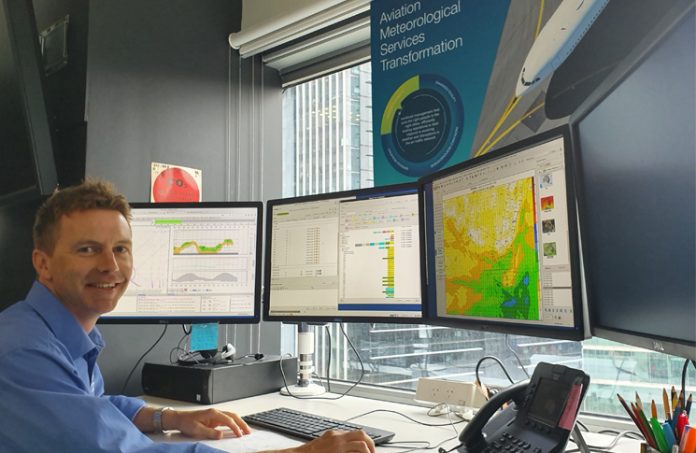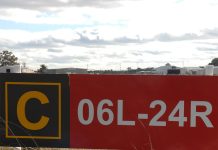The Bureau of Meteorology is transforming its operations to improve weather forecasting for the aviation industry.
Following the recommendations of a review commissioned by the industry, we have created aviation specialist roles and recruited meteorologists to establish aviation forecasting centres in Brisbane and Melbourne.
From 5 March 2020, aviation products and services for all states and territories, apart from South Australia, will be delivered from the new centres. South Australian products and services will transition into the Melbourne Centre from 16 April 2020.
The new dedicated aviation teams will actively engage across the industry to better understand and respond to your evolving needs.
A major investment in aviation forecasting systems provides these new teams with access to the latest advances in meteorological tools. This will help the Bureau to deliver meteorological data and forecast insight more effectively than ever to pilots, aviation operations centres and flight systems. Our objective is to ensure that aviators across Australia receive a higher quality of service.
The Melbourne centre will take on specialist aviation services during May and June 2020, including the Volcanic Ash Advisory Centre and the new Aviation Space Weather Global Centre responsibilities.
Contact details for aviation products and services are listed below.
Brisbane Aviation Forecasting Centre Melbourne Aviation Forecasting Centre
| Location | Phone Number | Location | Phone Number | |
| QLD North | 07 3239 8721 | NSW West | 02 9296 1527 | |
| QLD South | 07 3229 1854 | NSW East | 02 9296 1526 | |
| WA North | 08 9263 2259 | WA South | 08 9263 2255 | |
| NT | 08 8920 3814 | VIC | 03 9669 4850 | |
| TAS | 03 6221 2026 | |||
| SA | 08 8366 2773 |
Information on the aviation meteorological services transformation is available on the Bureau’s website: www.bom.gov.au/aviation/aviation-transformation
If you have any questions, email: Aviation_Transformation@bom.gov.au






Good to see/read. Hope they can improve the blind dart throwing industry! Personally the “forecast” WX is so far off the mark too many times that it’s a guess at best!
WX is not an exact science, never will be, might as well invent a better crystal ball!
Thanks to the BOM for the efforts of continuous improvement in provision of weather services.
As my old flying instructor once said to me, when flying, try to have everything going for you.
.. full fuel, accurate forecasts, well tuned engine, alert pilot. etc.
..thanks again for your work.
RQ.
I rely fairly heavily at times on forecasts for crossing Bass Strait. It’s difficult to get anything definitive out of BOM other than hours before. By then the weather radar and OzRunways weather overlay are as good!
Sometimes I find the forecast from a week out changes daily and on the day is completely different to the week previous forecast.
I need a reasonable forecast often days ahead to determine if I can cross and make it back. Hopefully when these new dedicated people come on line I can engage to get a better feel for the weather.
Unfortunately the WX forecasting of today is a haphazard process…not many would remember back in the 50’s, 60’s and 70’s…WX forecasts could be relied on, especially when you had to shepherd in a Pan Am, American or Qantas long haul flight.
I recall that in those days there was a well placed knowledge that the forecasters relied on their medical conditions to validate the forecasts such as arthritis, rheumatism etc This could be a myth but virtually the entire WX forecasters were made redundant and a new era began, and it has not been the same since…you only have to view the ABC WX forecasts.
Congratulations to the Bureau of Meteorology for their consistently accurate weather forecasting in Australia. The BOM website is my go-to for flight planning, commencing up to seven days out, using such valuable elements as Town Forecasts and Met Eye winds. Real time weather radar from the BoM, viewed on its own or applied as an overlay on OzRWYs is a fantastic SA asset and helps me make sound decisions in ensuring the integrity and safety of my VFR operations.
I have not used Aviation Weather for years, the gobbledy goop of mishmashed codings and abbreviations; two, four and six numeral date/time groups that vary in meaning depending on context of the report; heights at AGL or AMSL depending on type of report… just makes for a customer unfriendly product that is time consuming to decipher. The likelihood of errors in interpretation and concern about accuracy in enciphering by the Forecaster leaves the customer with doubts about the integrity of Aviation Weather reports and forecasts.
As far as I know, weather forecasts are no longer transmitted in Morse Code of printed out from Ticker Tape machines. Excessive abbreviation and format dependent encoding of information is not required or appreciated by anyone now in the Twenty First Centuary.
Aviation Weather Professionals here in Australia have been consistent in refusing to move with the times and respond to their customers requests for more easily understood forecasting and reporting. It takes very little band width to provide all reports with a single date/time group format, cloud heights suffixed with AMSL or AGL; winds suffixed M or T though the difference there may be rarely a go/no-go or runway choice factor.
The recent response of publishing a guide to interpretation of aviation weather reports is dismissive of customer needs and does not reflect professionalism in a service provider.
Hiding behind the screen of ICAO requirement is just denying the opportunity to lead ICAO out of the dark ages. How many dire events in GA will it take for the dismally reactive ICAO to move forward with the non-avaition world?
If Australia’s Aviation Meteorological Services can match the public domain Bureau of Meteorology for the timely delivery of an accurate and easily understood product that the customer can have confidence in…. now that would be an IMPROVEMENT.